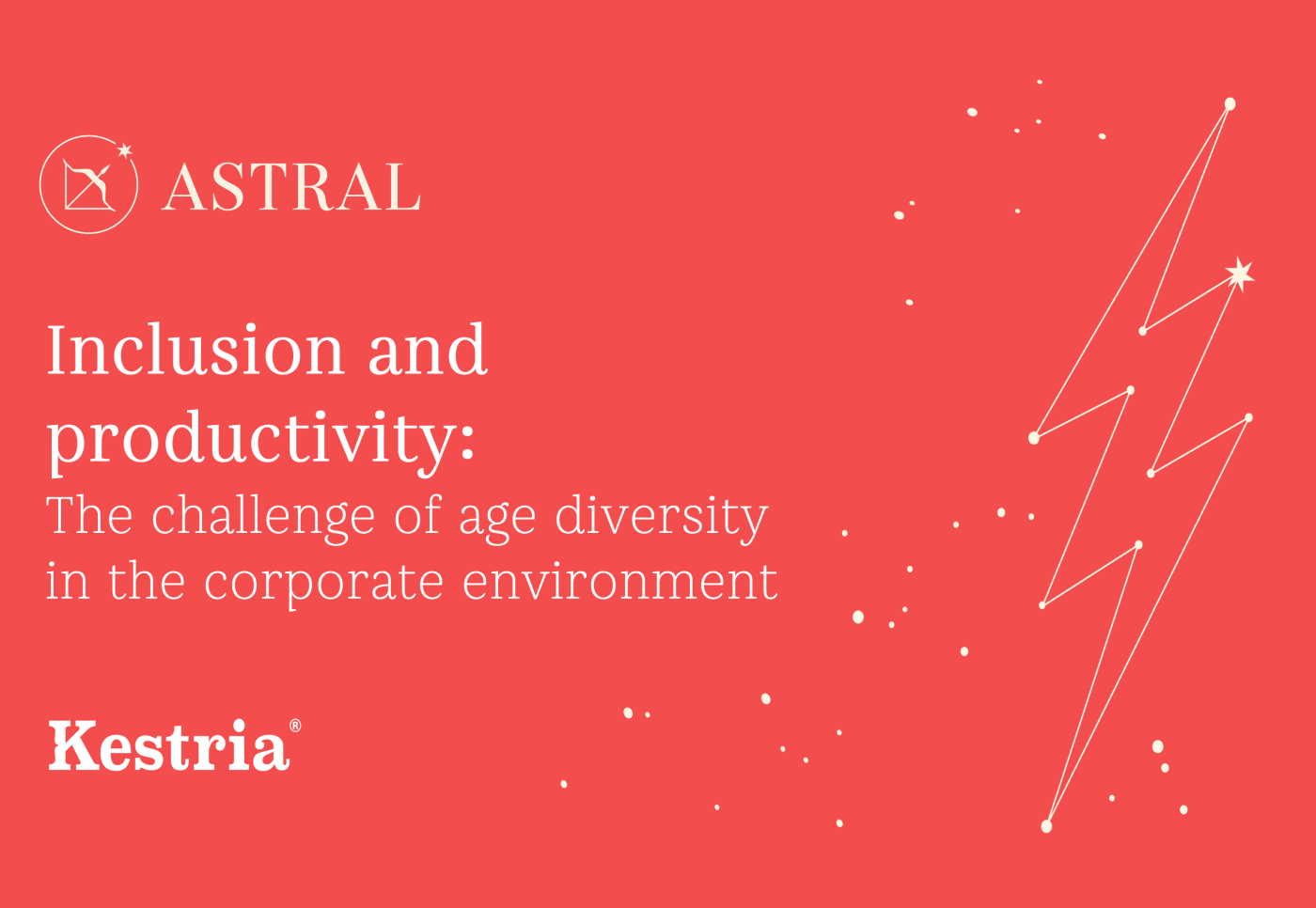In recent years, we have witnessed a significant transformation in the corporate landscape. For the first time in history, we have four generations living together in the workforce: Baby boomers, Generation X, Millennials and Generation Z. In this context, Human Resources managers play a key role in promoting inclusion and combating ageism, helping to build a work environment where everyone feels valued and able to contribute their best.
Different generations in the job market and organizational culture
Baby boomers (born between 1946 and 1964): This generation is known for its commitment and loyalty to organizations. They tend to value job stability and appreciate clear hierarchical structures. They are a valuable source of experience and knowledge, often holding leadership positions.
Generation X (born between 1965 and 1980): Members of Generation X are characterized by their pragmatism and desire to balance personal and professional life. They are independent, adaptable and often pioneers in adopting technology. They value autonomy and the opportunity to learn and grow continuously.
Millennials (born between 1981 and 1996): Also known as Generation Y, Millennials are technology-oriented, with exceptional digital skills. They value flexibility at work, company purpose and diversity. They are willing to change jobs to achieve professional and personal growth.
Generation Z (born from the mid-1990s to the early 2010s): Generation Z is the youngest in the job market and is highly digitally connected. They are creative, entrepreneurial and eager to make a difference. They value diversity and expect transparent and authentic communication from organizations.
‘When businesses judge candidates due to age, they overlook a wealth of experience. Age diversity brings a spectrum of skills and perspectives, with each generation contributing unique strengths. Younger workers bring tech-savvy insights and innovation, while experienced professionals offer leadership, refined social skills, and deep experience, enhancing decision-making. Adopting age diversity policies allows businesses to harness these varied talents. An inclusive culture that values generational differences fosters complementary teams, boosting collaboration and productivity,’ says Rania Abdalla, Founder & Managing Director, Kestria UAE & Egypt.
The different contributions of each generation
- Diversity of Experience and Knowledge: Each generation brings a unique perspective based on their life and career experiences, enriching the organization’s knowledge base.
- Innovation and Creativity: The mix of different points of view and problem-solving approaches can lead to a more innovative environment, with fresh and creative ideas.
- Continuous Learning: Younger generations can learn from the experience of older generations. In this way, they can also benefit from the technological knowledge and new trends brought by the younger generations.
- Variety of Skills: Each generation tends to have unique skills and competencies. This allows for the formation of multidisciplinary teams that can deal with a wide range of challenges.
- More Effective Conflict Resolution: Generational diversity can promote a richer, more balanced approach to conflict resolution. This view, with different perspectives, contributes to more comprehensive solutions.
‘Promoting age diversity is key for any organisation to be successful in their industry. The reason for the importance of this seems obvious but it definitely is not. Each generation has something to teach as well as to learn from each other,’ adds Japheth A. Worthy, Associate Director – MedTech, Kestria Japan.
Challenges in managing four generations
The coexistence of these four generations in the workplace can create communication challenges, divergent values and work preferences.
Managers play a crucial role in mediating these differences, promoting mutual understanding and collaboration. This includes developing flexibility policies, intergenerational training and mentoring programs.
‘A leader’s ability to manage diversity includes of course age differences. As a top-notch sporting coach, he/she must enhance the group’s potential taking the best of each member and capitalizing on these differences,’ states Ricardo Nugent, Managing Partner, Kestria Peru.
Combating ageism in an inclusive environment
To ensure an inclusive working environment, it is vital to combat ageism, which involves age-related stereotypes or prejudices. Managers must lead initiatives to raise awareness, train and promote age diversity. Such initiatives not only benefit employees but also strengthen the organizational culture and company image.
By promoting mutual understanding, combating ageism and valuing the contributions of each generation, companies can create an environment where everyone feels valued and able to contribute to the success of the organization.
‘The convergence of different generations in today’s workplace creates a blend of tradition and innovation. As these generations coexist, they offer diverse perspectives, values, and work styles, transforming the professional landscape. Companies that leverage these varied strengths through inclusive environments can gain from a vast pool of skills, experiences and ideas. I advise managers of multi-generational teams to prioritize open and inclusive communication to nurture a culture of dialogue and understanding across age groups, fostering respect and collaboration among colleagues,’ says Krista Kristiana Ziedina, Consultant, Member of the Board, Kestria Latvia.

